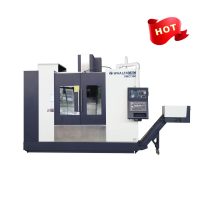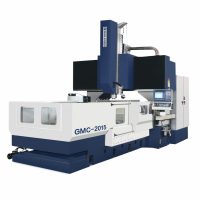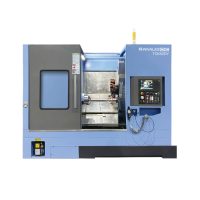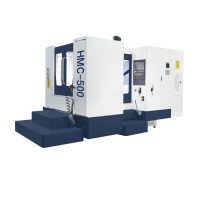E-Mail:sales@whalescnc.com
E-Mail:sales@whalescnc.com
9 Insights on CNC Machine Tool Power Consumption: How to Achieve Energy Efficiency & Cost Savings
I. Introduction to CNC Machine Tool Power Consumption
Exploring the Role of CNC Machine Tools in Modern Manufacturing and Their Power Consumption
CNC machine tools are pivotal in modern manufacturing, offering precision and efficiency in producing a wide range of components. This section provides a brief overview of these tools and underscores their critical role in various industries. We also introduce the topic of CNC Machine Tool Power Consumption, discussing its significance in the context of operational efficiency and cost management in manufacturing.
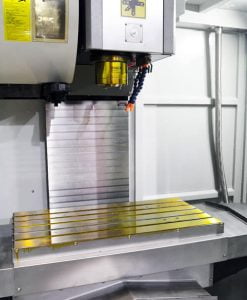
The Relevance of Power Consumption in CNC Machines
Understanding the power consumption of CNC machines is crucial for manufacturers. It impacts not only the operational costs but also the environmental footprint of manufacturing processes. This introduction sets the stage for a deeper exploration of how power consumption is a key factor in the efficient and sustainable operation of CNC machine tools.
II. Factors Influencing CNC Machine Tool Power Consumption
Comprehensive Overview of Factors Affecting CNC Machine Power Usage
The power consumption of CNC machines is influenced by various factors, each playing a significant role in the overall energy efficiency of these tools. This section provides an overview of these factors, offering insights into how they collectively determine the power usage of CNC machines.
Key Factors Impacting CNC Machine Power Consumption
- Machine Size and Type: The physical dimensions and the specific type of CNC machine greatly influence its power consumption. Larger machines or those designed for more complex tasks typically require more power.
- Spindle Speed and Feed Rate: The operational settings of the machine, particularly the spindle speed and feed rate, are crucial in determining how much power a CNC machine consumes during its operation.
- Type of Machining Process: Different machining processes, such as 2D vs. 3D machining, milling, or turning, have varying power requirements. The complexity and nature of these processes directly impact energy consumption.
- Choice of Cutting Tools and Materials: The selection of cutting tools and the type of materials being machined also play a significant role in the power consumption of CNC machine tools. Different materials and tools can lead to varying levels of energy usage.
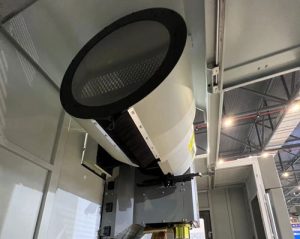
III. Understanding Average Electricity Consumption in CNC Machine Tool Power Consumption
Analyzing the Average Electricity Usage of CNC Machines
In this section, we delve into the average electricity consumption that is integral to CNC Machine Tool Power Consumption. This analysis is crucial for manufacturers to gauge the energy and cost efficiency in CNC machining. We explore the typical power requirements of CNC machines, providing a baseline for understanding their energy consumption patterns.
Comparative Analysis of Different CNC Machine Types
The power consumption varies significantly across different types of CNC machines. This part of the article compares the electricity usage of various CNC machine models, from compact milling machines to larger, more complex systems. Understanding these differences is key to optimizing energy and cost efficiency in CNC machining.
Industry Case Studies on CNC Machine Power Consumption
We will also present case studies and real-world examples from industry sources. These case studies offer practical insights into how different CNC machines perform in terms of power usage, providing valuable benchmarks for energy consumption.
IV. Maximizing Energy Efficiency in CNC Machining
The Critical Importance of Energy Efficiency in CNC Machining
Energy efficiency is a cornerstone of sustainable and cost-effective manufacturing. In this section, we emphasize the importance of energy efficiency in CNC machining, highlighting how it directly impacts CNC Machine Tool Power Consumption and the overall cost-effectiveness of manufacturing operations.
Technological Innovations Enhancing Energy Efficiency
We explore the latest technological advancements and design improvements that are shaping the future of energy efficiency in CNC machining. From advanced control systems to energy-saving machine components, these innovations are pivotal in reducing CNC Machine Tool Power Consumption while maintaining high performance.
The Role of Regular Maintenance in Energy Efficiency
Lastly, the article discusses the critical role of maintenance in ensuring energy and cost efficiency in CNC machining. Regular maintenance not only extends the lifespan of CNC machines but also ensures they operate at optimal energy efficiency, significantly impacting overall power consumption.
V. Reducing Power Consumption
Strategies for Reducing Power Consumption in CNC Machining
Reducing power consumption in CNC machining is essential for both economic and environmental reasons. Manufacturers can adopt several strategies to achieve this goal, ranging from operational adjustments to technological upgrades.
Optimization of Cutting Conditions
Optimizing cutting conditions is a key strategy for reducing power consumption. This involves adjusting parameters such as spindle speed, feed rate, and depth of cut to achieve the most efficient cutting process. For example, using the right Surface Milling techniques can significantly reduce unnecessary power usage while maintaining productivity.
Use of Energy-Efficient Motors and Variable Frequency Drives (VFD)
Incorporating energy-efficient motors and Variable Frequency Drives (VFDs) in CNC machines can lead to substantial energy savings. VFDs allow for the precise control of motor speed and torque, ensuring that the machine uses only the amount of energy necessary for a given task.
Software Optimizations in CNC Programming
Software plays a crucial role in CNC machining. Optimizing CNC programming can lead to more efficient machine operation, reducing idle times and unnecessary movements. This not only saves energy but also enhances overall machining efficiency.
VI. Cost Implications and Savings
Analysis of Electricity Costs in CNC Operations
Electricity costs are a significant part of the operating expenses in CNC machining. Understanding these costs is crucial for manufacturers to identify potential savings. Factors such as the type of machine, its operational intensity, and energy efficiency directly influence these costs.
Impact of Peak Demand Charges and Location on Costs
Peak demand charges and the geographical location of the manufacturing facility can greatly affect electricity costs. In areas with higher energy rates or peak demand charges, the cost implications can be substantial, making energy efficiency even more crucial.
Long-Term Savings and Cost-Effectiveness of Energy-Efficient Upgrades
Investing in energy-efficient upgrades, such as modern Machining Centers with advanced features, can lead to significant long-term savings. While the initial investment might be higher, the reduction in energy costs over time often makes these upgrades cost-effective. Additionally, these upgrades can enhance production efficiency and quality, leading to further economic benefits.
VII. Environmental Impact
Discussion on the Environmental Impact of Power Consumption in CNC Machining
The environmental impact of power consumption in CNC machining is a significant concern. High energy usage not only leads to increased operational costs but also contributes to a larger carbon footprint. The manufacturing sector is under increasing pressure to reduce emissions and adopt more sustainable practices. Efficient energy use in CNC machining, therefore, plays a crucial role in minimizing environmental impact.
The Role of Sustainable Practices in Manufacturing
Sustainable manufacturing practices are becoming increasingly important. This includes using energy-efficient machinery, optimizing production processes to reduce waste, and considering the entire lifecycle of the product and machinery. By adopting sustainable practices, manufacturers not only contribute to environmental conservation but also align with global standards and consumer expectations for eco-friendly operations.
VIII. Future Trends and Innovations
Emerging Trends and Innovations in Reducing Power Consumption of CNC Machines
The future of CNC machining is geared towards greater energy efficiency. Innovations in machine design, such as improved Machining Center Spindles and Auto Tool Changers, are continuously evolving to reduce power consumption. Additionally, advancements in software algorithms for more efficient tool paths and machine operations are playing a key role.
Government Incentives and Programs Supporting Energy-Efficient Practices
Many governments worldwide are offering incentives and programs to encourage the adoption of energy-efficient practices in manufacturing. These may include tax breaks, grants, or subsidies for companies investing in energy-efficient technologies. Such initiatives not only support the industry in reducing operational costs but also promote a shift towards more sustainable manufacturing processes.
In conclusion, managing power consumption in CNC machining is crucial for both economic and environmental reasons. By understanding the factors that influence energy usage, adopting strategies to reduce power consumption, and staying abreast of emerging trends and innovations, manufacturers can achieve significant cost savings and contribute to environmental sustainability. As a leading manufacturer, WhalesCNC is committed to providing state-of-the-art CNC Machine Tools that meet these evolving demands, ensuring both efficiency and eco-friendliness in manufacturing processes.
IX. Conclusion
In this article, we have explored the multifaceted aspects of power consumption in CNC machine tools, highlighting its significance in the realm of modern manufacturing. From understanding the average electricity consumption of various CNC machines, such as Vertical Machining Centers and 3 Axis CNC Milling Machines, to examining the factors that influence this consumption, we have delved into the nuances that define energy usage in CNC machining.
We discussed strategies for reducing power consumption, emphasizing the role of optimized cutting conditions, the use of energy-efficient components like Machining Center Spindles and Auto Tool Changers, and the importance of software optimizations in CNC programming. The cost implications of electricity usage in CNC operations were also examined, underscoring the impact of peak demand charges, location, and the long-term savings achievable through energy-efficient upgrades.
Furthermore, we addressed the environmental impact of power consumption in CNC machining, stressing the importance of sustainable practices in manufacturing. Looking ahead, we noted emerging trends and innovations aimed at reducing power consumption, as well as government incentives and programs that support energy-efficient practices.
In conclusion, understanding and managing power consumption in CNC machining is not just a matter of economic prudence; it is also a commitment to environmental sustainability. As a leader in the field, WhalesCNC is dedicated to providing advanced CNC Machine Tools that embody these principles. By embracing energy-efficient technologies and practices, manufacturers can achieve significant cost savings while contributing to a more sustainable future.
Need to buy a machine tool?
You can upload drawings of machined parts. Our experts will help you determine the best machine for your needs.
About WhalesCNC
WhalesCNC is a high-quality CNC machine tool manufacturer located in Xuzhou, Jiangsu, China. It has more than 20 years of manufacturing experience and is committed to comprehensive solutions to improve cutting efficiency.

